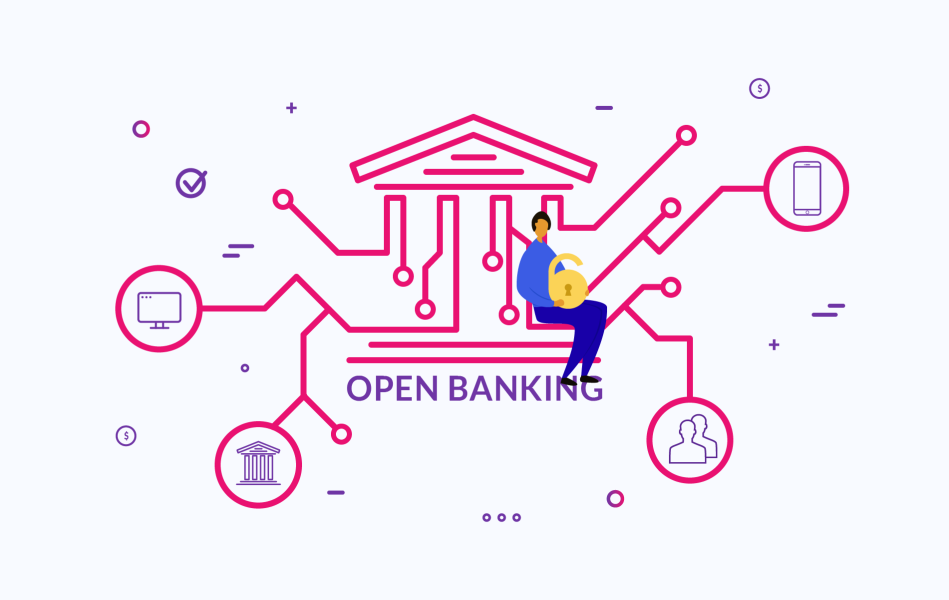October 5, 2023
Unlocking the Potential of Open Banking: A Global Paradigm Shift
The open banking revolution is reshaping the financial landscape. From simplified transactions to maximizing returns for subscription models, discover how businesses and consumers stand to benefit. A must-read for forward-thinkers.

The open banking revolution is upon us. Poised at a pivotal inflection point, the global open banking market is forecasted to flourish at a compound annual growth rate in the high twenties. By 2030, experts predict that this market will surpass the hundred billion-dollar threshold. But what is open banking? How does it touch our lives, and more importantly, how can businesses harness its potential?
In this comprehensive guide, we'll delve into the transformative world of open banking, explore its applications, and spotlight its advantages for businesses.
The Quandary of Restricted Bank Data
Traditionally, bank account details such as balances, spending patterns, cash flow, and more were the exclusive domain of the bank and the account holder. On the face of it, this exclusivity prioritizes privacy and security.
However, this restrictive model isn't without its flaws.
Think about your last online purchase. You likely used a credit card or perhaps Paypal. Though these methods pull funds from your bank, they introduce additional layers between you and the seller. This complexity not only complicates transactions but also adds potential security risks.
Moreover, there are situations where sharing bank details would be advantageous:
Consolidating multiple account overviews.
Applying for mortgages or business loans.
Renting offices or vehicles for business operations.
Yet, the conventional process requires multiple documents filled with scattered financial details, leading to labor-intensive, error-prone evaluations.
Open Banking: The Game Changer
Enter open banking, a groundbreaking approach that grants third parties access to bank data—of course, under stringent security measures and with the account holder's explicit consent.
Globally, the adoption of open banking varies. While the U.S. leans towards a market-driven model, the EU enforces it through regulations. Meanwhile, countries like Australia, Canada, India, Hong Kong, and Mexico are also pioneering their open banking journeys.
Open banking pivots around two core components: payments and account data.
1. Payments, Simplified and Secure: Open banking facilitates direct transactions between consumer and business bank accounts, sidestepping credit card networks. This model is beneficial for any business transacting online, tapping into a vast market potential.
2. Account Data Access, Redefined: With open banking, businesses like lenders or utilities can securely access a customer's financial snapshot, allowing for more tailored service offerings.
The Compelling Business Case for Open Banking Payments
Businesses, especially online ones, are no strangers to the high costs of credit card payments. With fees often ranging between 1-3% per transaction in the US—the highest globally—businesses are cornered into a dilemma: absorb these expenses or transfer them to customers.
However, open banking payments present a lucrative alternative:
Cost Efficiency:
These payments can be 70-80% cheaper than credit card transactions.
Enhanced Security:
In the US, the ACH network, coupled with sophisticated solutions like Lynk, considerably reduces fraud risks.
Seamless User Experience:
Customers can authenticate transactions swiftly with biometrics, negating manual data entry and its associated risks.
Maximizing Returns for Subscription Models
For subscription businesses, open banking payments address pain points like card expirations, hard declines, and chargebacks, ensuring consistent revenue streams. With bank accounts being perennial, issues like card expirations become obsolete.
Value Proposition for Consumers
It's essential to recognize that open banking's benefits extend to consumers. While credit cards and online wallets dominate today's payment landscape, open banking assures cheaper transactions, enhanced security, and a refined user experience. These advantages eventually trickle down to consumers in various forms—be it reduced prices, innovative product offerings, or uninterrupted subscription access.
In an era where businesses grapple with challenges like market competition and macroeconomic uncertainties, open banking emerges as a promising beacon. It promises reduced operational costs and an enriched customer journey.
Interested in integrating open banking into your business model? Get in touch with us today by clicking here.
